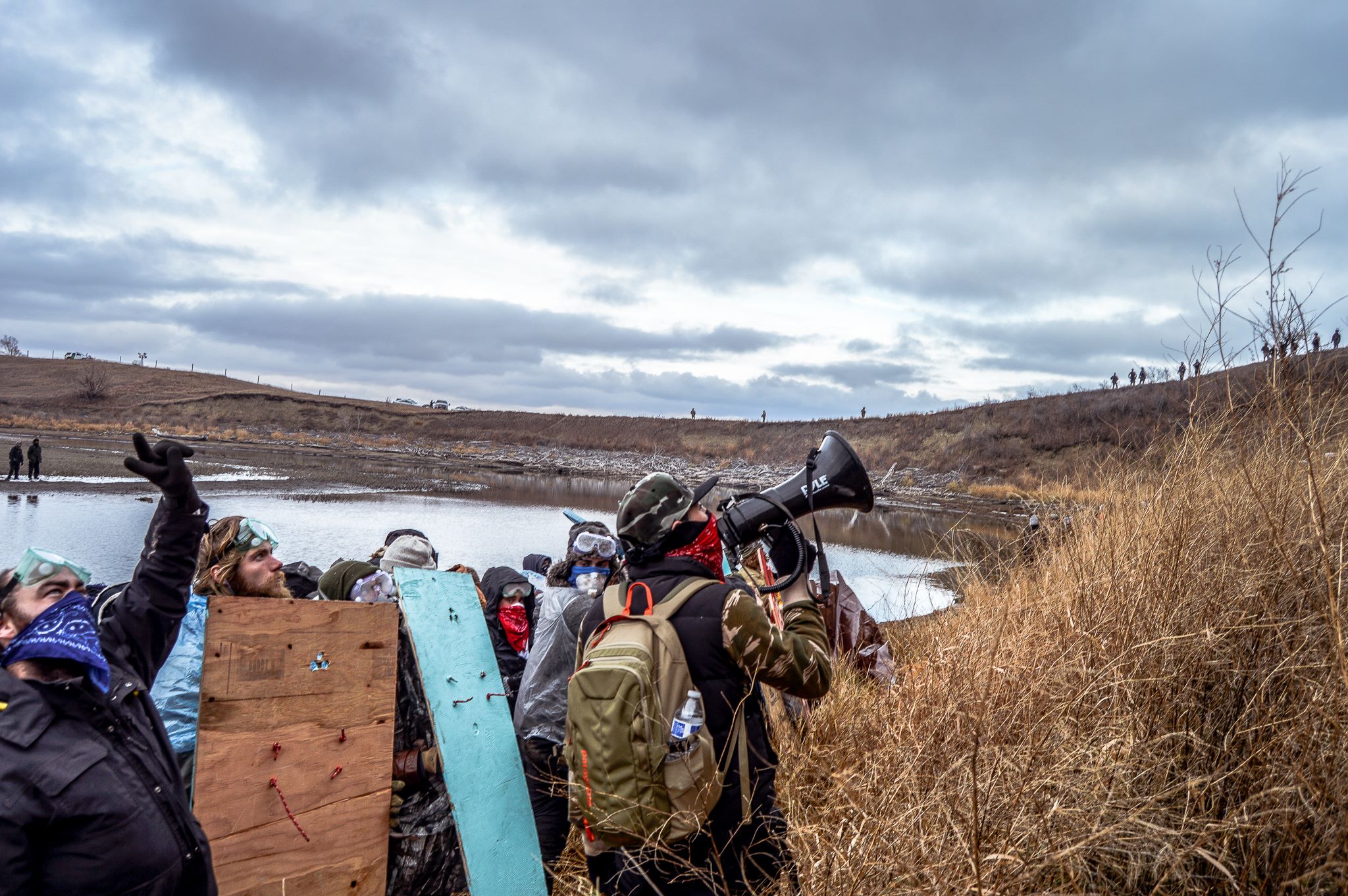
Law enforcement responded with another show of force in North Dakota on November 24, 2016. Photo by Rob Wilson [GoFundMe]
Miner’s Canary
By Delphine Red Shirt
Lakota Country Times Columnist
lakotacountrytimes.com A miner’s canary is a caged bird that is kept in a mine so that if the bird dies it is a warning of dangerous levels of toxicity in a mine. It is a saying that goes with any living organism whose death or distress is an early warning of danger. We can say that the Dakota Access Pipeline water protectors are like the miner’s canaries. A recent documentary, “Before the Flood,” on National Geographic by Leonardo DiCaprio is about climate change. Regardless of what critics of global warming say, the ocean waters are rising and some of the islands are in distress. In working with students, sometimes from international communities, I am always interested in what they have to say. I have read first-hand accounts on loss of homeland for one islander because of rising ocean levels; and an engineering student trying to calculate how much concrete would be needed to shore up cities located along the oceans on both sides of our continent. These are quiet voices, but they are real. One way to support young college and university students interested in helping “no DAPL” is to allow them to speak up in academic or public places because it is their future, their planet, their water. In fact, “no DAPL” is not just the Standing Rock Oyate but everyone who is interested in clean drinking water in the future. Historically, Standing Rock and Cheyenne River have a lot at stake, especially if you look at the history of Oahe Dam. Oahe was named after the Oahe Indian (Lakota) Mission in 1874. Earlier in time, in 1804, the Lewis & Clark expedition passed through that area. In 1948, after condemning and taking approximately 55,993 acres from Standing Rock and 150,000 acres from Cheyenne River, construction began on Oahe Dam which cost taxpayers $340,000,000 to build. When completed, in 1962, it began to generate power and provided electricity to South Dakota, North Dakota, Nebraska, Minnesota, and Montana. Currently, it has about 51 recreation areas around it. Standing Rock and Cheyenne River lost acres of land for a project that the government spent millions on. It doesn’t make sense that this would be jeopardized when so many benefit from Oahe? What the mainstream press makes out to be only the tribe affected, ignores the states and communities in that region that rely on Oahe Dam? When the protestors say they are protectors, they are. But more than, they are the miner’s canary for the entire region. One way to see how safe these pipelines are is to watch local news about companies like Colonial Pipeline Company; their catastrophic disasters in Alabama where pipeline leaks have affected ponds, wildlife areas in the state, forcing small communities and the state to react to the environmental disasters created by pipeline leaks. In 2016, Colonial has had five leaks that impacted the area. In September alone the Colonial pipeline spilled an estimated 336,000 gallons into the environment. “No DAPL” is first and foremost about the environment in the United States, and about energy development, and about tribal rights. Intuitively most environmentalists, students, and those who are looking to their future worry along with the water protectors.

Visit the Lakota Country Times and subscribe today
Whether, those who care about the environment are seen as naïve about energy development or as un-American, what is evident, especially in the documentary film by DiCaprio is there are alternatives (clean energy alternatives) and the banks supporting DAPL need to held responsible, as well, as we all look to the future. As far as tribal rights go, Standing Rock is a protector of the culture in that region. Our oral tradition tells us that we came from Inyan, the rock, and the rock formations left by our oyate in that area may very well represent messages intended for us. (Delphine Red Shirt can be reached at redshirtphd@gmail.com) Find the award-winning Lakota Country Times on the Internet, Facebook and Twitter and download the new Lakota Country Times app today.
Join the Conversation
